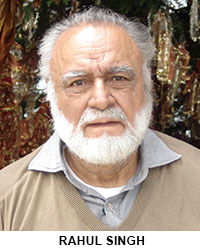 – Rahul Singh, a former editor of Reader’s Digest, is a member of the Delhi Public Schools Society
– Rahul Singh, a former editor of Reader’s Digest, is a member of the Delhi Public Schools Society
EducationWorld will doubtless be covering the National Education Policy (NEP) 2020 in all its facets. This column, however, is about one aspect of education, which has come to the fore recently with the physical closure of all schools: online classes and online teaching. Understandably, NEP 2020 drafts, four years in formulation, could not have anticipated that the coronavirus would totally transform the education scene.
UNESCO has estimated that over 1.3 billion children — a cohort equivalent to the entire population of India — in 186 countries have not attended school since early March when the pandemic struck. That’s why the concept of online study and teaching acquired a life of its own and became a fact of life for children and teachers. Four years ago, the size of the Indian online education market was a mere 1.6 million users. Next year, the number of online learners is expected to sky-rocket to 10 million. Innovative companies like Byjus and Edutech are cashing in.
A huge and unprecedented adjustment is needed. Teachers have to be retrained to engage the attention of their students as they did in bricks-n-mortar classrooms. There are other challenges. Eye contact between teacher and student is of utmost importance. In a physical classroom of 30-40 students, this isn’t difficult for a good teacher who commands the respect of her students. But teaching 30-40 children online is an altogether different story. Students following lessons on their smart phones or computers cannot possibly get the same type of attention from the teacher. Therefore, teachers need to develop a different set of classroom management skills.
However, before we get to that, we need to urgently do something to improve India’s Internet infrastructure which is critically important for effective online teaching-learning. First, reliable broadband connectivity, which means uninterrupted electricity supply, must become normative. Second, a digital device on which students can follow their online teachers, must be made available. These devices are one of three: a smart phone, tablet, or computer. Without at least one of them, online teaching-learning is impossible. Most Indian households, especially those of the poor, have an ordinary television set which can access cable TV channels, and a simple, cheap cell phone (but not a smart one, which is more expensive).
Here are some statistics to highlight India’s poor digital connectivity infrastructure. The country has an estimated 450 million Internet users, the second highest in the world after China. Nevertheless, one-third of the population creates a big imbalance. Forty percent of Internet users live in cities and towns, with 15 percent in rural areas. As many as 55,000 villages have no mobile network coverage. With schools closed, none of the children in these villages are getting any education. One national newspaper narrated the tragic story of a poor Gujarati farmer who spent all his sav ings to buy an old satellite dish, and a second-hand television, just so that his daughter could continue her education during the national lockdown. A survey by the Maharashtra State Council of Educational Research and Training and Unicef indicates that two-thirds of households in the state don’t have access to smart phones, and less than 1 percent have desktop computers or laptops.
The situation in other states isn’t any better. In May, the prime minister announced a Rs.20 lakh crore economy ‘stimulus package’ after the outbreak of the coronavirus pandemic. Why couldn’t some provision been made in the package to buy smart phones and tablets for children and youth who need them to study online? The fact that no such provision was made highlights the low importance government accords to education.
I n sum, only a small percentage of our population has the basic infrastructure required for online learning. Although the middle class and wealthy households have better connectivity, education authorities at the Centre and in the states have paid minimal attention and provided little guidance to 240 million students and over 9 million teachers who have been seriously impacted by the pandemic and closure of all schools for five months. And there’s no indication yet when they will reopen, even to a limited extent.
However, reopen they must. There is really no viable substitute for physical classrooms and schools, and infrastructure such as playgrounds, swimming pools, laboratories, up-to-date computers, libraries, and cultural curriculums that good schools provide. Access to co-curricular and extra-curricular education is vital for well-rounded education. The conventional school has other non-scholastic benefits as well, which can’t be provided by digital classrooms. Communication with one’s peers in school and interaction with students of different castes and communities. In India, in particular, with so many divisive forces, and narrow-minded politicians always ready to exploit caste and communal prejudices for their own purposes, we need students, dedicated to removing differences and promoting a secular, progressive society emerging from our schools.
Also read: Edtech can empower NEP 2020























